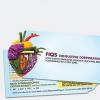Hello all,
I've been studying the ISO 11731:2017 (Enumeration of Legionella). And I have a question about the procedure for samples with high concentration of interfering microorganisms.
One of the procedures that is required for these samples, is Plating after dilution (1:10). To be able to count the Legionella colonies, shouldn't the cfu/lt of the legionella be extremely high too, despite the number of the interfering microorganisms?
For example, if I follow the procedure and count 15 cfu (legionella), then it will be 300000 cfu/lt (legionella).
If I count 90 cfu (legionella), then it will be 1800000 cfu/lt (legionella).
Did I understand the procedure correctly? The dilution should occur to the sample (1000ml) itself, or to the concentrated form?
Should we follow this procedure only if we expect high number of Legionella?
Regards,
Ismene
















